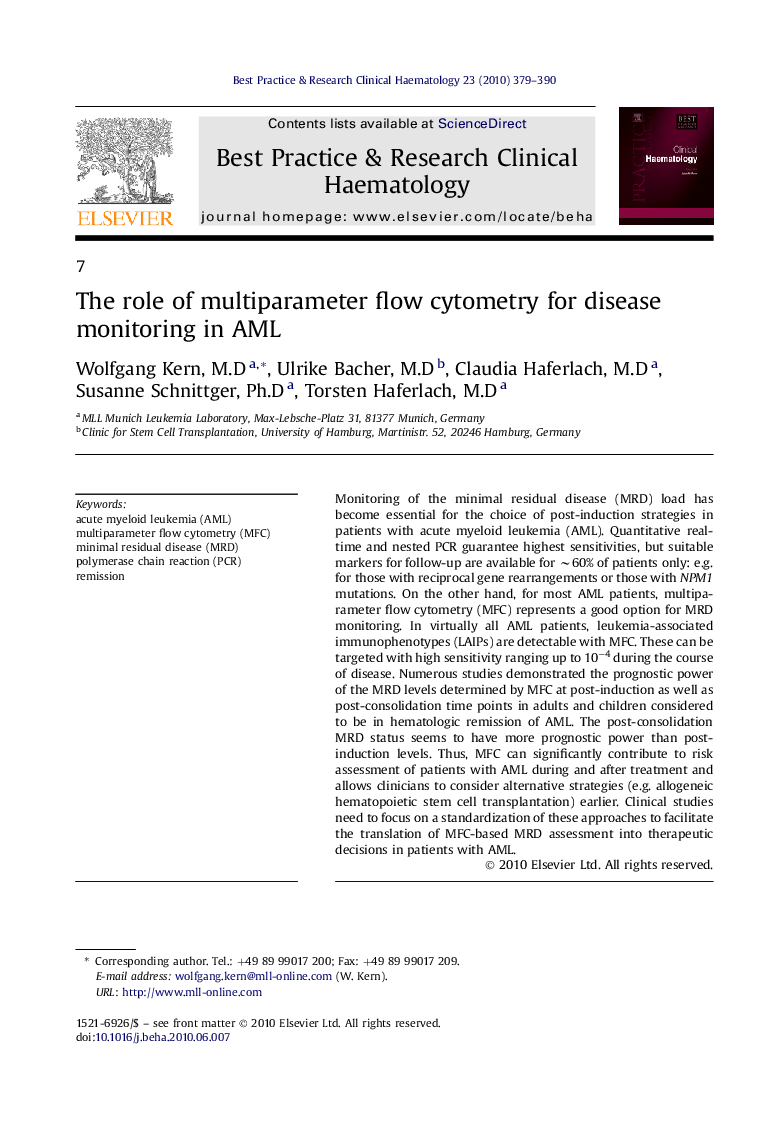| Article ID | Journal | Published Year | Pages | File Type |
|---|---|---|---|---|
| 2100231 | Best Practice & Research Clinical Haematology | 2010 | 12 Pages |
Monitoring of the minimal residual disease (MRD) load has become essential for the choice of post-induction strategies in patients with acute myeloid leukemia (AML). Quantitative real-time and nested PCR guarantee highest sensitivities, but suitable markers for follow-up are available for ∼60% of patients only: e.g. for those with reciprocal gene rearrangements or those with NPM1 mutations. On the other hand, for most AML patients, multiparameter flow cytometry (MFC) represents a good option for MRD monitoring. In virtually all AML patients, leukemia-associated immunophenotypes (LAIPs) are detectable with MFC. These can be targeted with high sensitivity ranging up to 10−4 during the course of disease. Numerous studies demonstrated the prognostic power of the MRD levels determined by MFC at post-induction as well as post-consolidation time points in adults and children considered to be in hematologic remission of AML. The post-consolidation MRD status seems to have more prognostic power than post-induction levels. Thus, MFC can significantly contribute to risk assessment of patients with AML during and after treatment and allows clinicians to consider alternative strategies (e.g. allogeneic hematopoietic stem cell transplantation) earlier. Clinical studies need to focus on a standardization of these approaches to facilitate the translation of MFC-based MRD assessment into therapeutic decisions in patients with AML.
